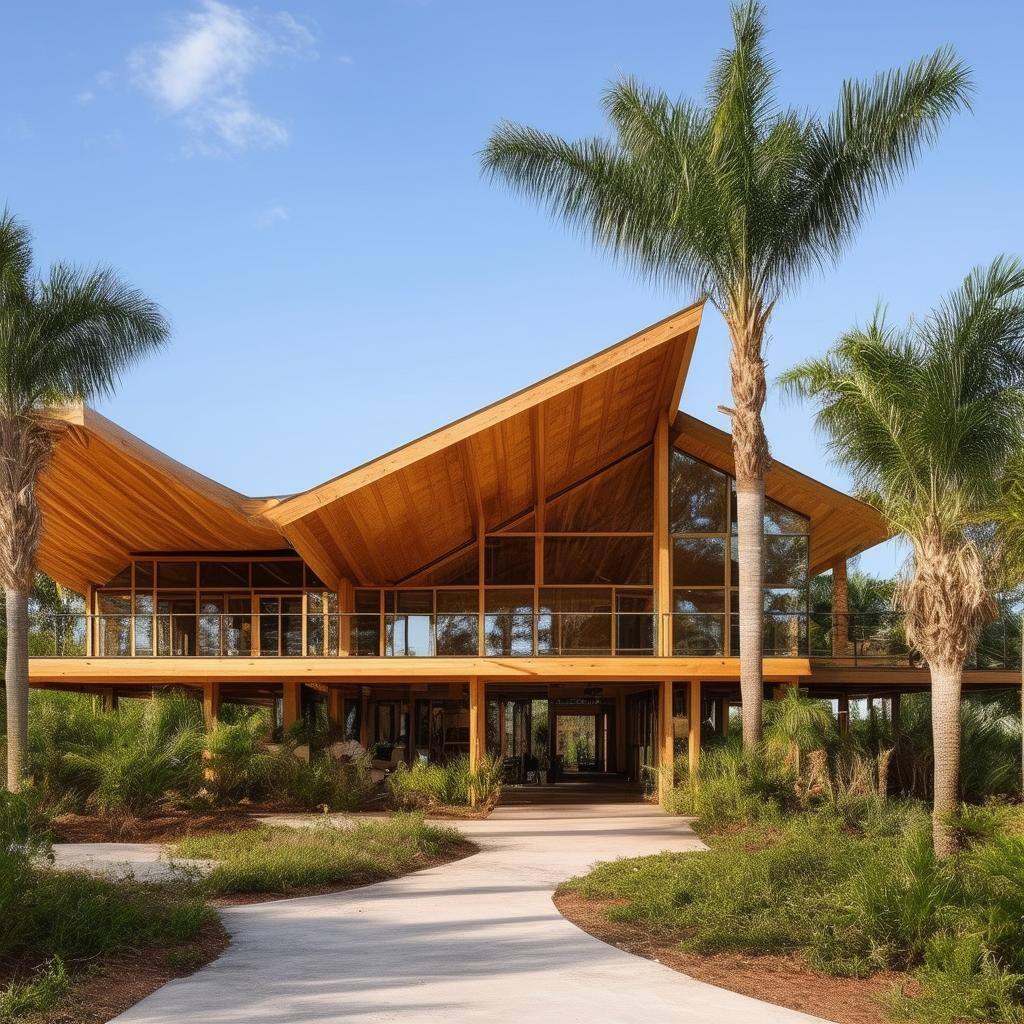Sustainable Construction with CLT in Florida

Discover the benefits of using Cross Laminated Timber (CLT) in sustainable construction projects in Florida. Explore how CLT combines modern architecture with traditional Florida vernacular design.
Introduction
Florida is known for its unique architectural style, characterized by its vibrant colors, lush landscapes, and a blend of various cultural influences. In recent years, there has been a growing emphasis on sustainable construction practices, which aim to minimize the environmental impact of buildings while maximizing energy efficiency and occupant comfort. One innovative material that is gaining popularity in sustainable construction is Cross Laminated Timber (CLT). This blog post will explore the benefits of using CLT in Florida and how it can be integrated with the state's vernacular architecture.
As the demand for sustainable construction continues to rise, it is important to explore alternative building materials that are environmentally friendly and economically viable. CLT is a prime example of such a material, as it is made from layers of timber boards that are glued together at right angles. This construction technique enhances the structural integrity of the timber, resulting in a material that is strong, durable, and resistant to fire and moisture. Additionally, CLT has excellent thermal insulation properties, which can help reduce energy consumption and lower heating and cooling costs. With these advantages, it is clear why CLT is becoming a popular choice in sustainable construction projects in Florida.
The Rise of Sustainable Construction
Sustainable construction practices have gained traction in recent years as individuals and organizations recognize the importance of reducing their carbon footprint and preserving natural resources. The rise of sustainable construction can be attributed to several factors, including advancements in technology, increased awareness of environmental issues, and the desire for energy-efficient buildings. By utilizing CLT in construction projects, builders can contribute to the development of a more sustainable built environment.
Understanding Cross Laminated Timber (CLT)
Cross Laminated Timber (CLT) is a versatile and sustainable building material that is revolutionizing the construction industry. It is made by stacking layers of timber boards at right angles and bonding them together with adhesive. This cross-lamination technique provides CLT with exceptional strength and stability.
CLT is known for its numerous benefits, including its high strength-to-weight ratio, fire resistance, and acoustic insulation properties. It is also a renewable resource, as timber can be sustainably harvested and replanted. Furthermore, CLT has a smaller carbon footprint compared to traditional construction materials such as steel and concrete, making it a more environmentally friendly option for sustainable construction projects.
Benefits of CLT in Florida
When it comes to sustainable construction in Florida, CLT offers several key benefits. First and foremost, CLT is lightweight yet incredibly strong, making it an ideal choice for constructing tall buildings. Its structural integrity and durability are particularly important in a state prone to hurricanes and other extreme weather events.
Additionally, CLT provides excellent thermal insulation, helping to reduce energy consumption and improve indoor comfort. Florida's warm and humid climate makes energy-efficient construction crucial for maintaining comfortable indoor temperatures while minimizing reliance on air conditioning.
Furthermore, CLT's natural aesthetic qualities align well with Florida's vernacular architecture. By incorporating CLT into sustainable construction projects, builders can create structures that seamlessly blend with the state's unique architectural style, characterized by its use of vibrant colors, natural materials, and open spaces.
Integrating CLT with Florida Vernacular Architecture
Integrating CLT with Florida's vernacular architecture allows for the creation of sustainable buildings that are both visually appealing and environmentally friendly. By combining the modern techniques of CLT construction with traditional architectural elements, builders can achieve a harmonious balance between innovation and cultural heritage.
For example, CLT can be used to construct the structural framework of a building, while incorporating traditional Florida vernacular design elements such as deep porches, overhangs, and large windows. This integration not only enhances the aesthetic appeal of the building but also maximizes natural ventilation and daylighting, reducing the need for artificial lighting and mechanical ventilation.
Furthermore, CLT's natural wood finish can be left exposed, showcasing the material's beauty and warmth. This aligns with the use of natural materials in Florida's vernacular architecture, creating a sense of connection to the surrounding environment.
Overall, integrating CLT with Florida's vernacular architecture allows for the creation of sustainable buildings that are not only energy-efficient but also culturally significant and visually striking.
Conclusion
In conclusion, Cross Laminated Timber (CLT) offers numerous benefits for sustainable construction projects in Florida. Its strength, durability, and thermal insulation properties make it an ideal choice for the state's warm and humid climate. By integrating CLT with Florida's vernacular architecture, builders can create sustainable buildings that seamlessly blend with the state's unique cultural and architectural heritage. As the demand for sustainable construction continues to rise, CLT is poised to play a crucial role in shaping the future of Florida's built environment.